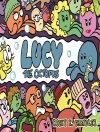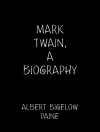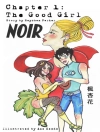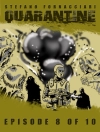Once called, “the longest and most charming love letter in literature, ” Orlando: A Biography(1928) is a semi-biographical novel by Virginia Woolf.
Inspired by a three-year long affair with Vita Sackville-West, Orlando: A Biography is the satirical tale of an adventurous young poet named Orlando and his journey through over three hundred years of English literary history. Born a male nobleman, Orlando is a handsome young man serving as a page at the Elizabethan Court. When he falls in love with Sasha, a Russian princess, Orlando is subjected to both heartbreak and inspiration–leading him onto a path he might not have otherwise pursued. Through trial, tribulation, harmony and strife, Orlando persists on and one day awakens to find that he has metamorphosed into a woman overnight. Embracing his newfound womanhood, Orlando begins a new life in the eighteenth century, making the acquaintance of great writers and poets alike as he works towards the publication of The Oak Tree, his centuries-old volume of poetry.
Praised as one of the most influential works of feminist and queer literature, Orlando: A Biography is a unique and unusual look at queer love in the twentieth century.
This edition of Orlando: A Biography is a classic of queer literature reimagined for modern readers.
Since our inception in 2020, Mint Editions has kept sustainability and innovation at the forefront of our mission. Each and every Mint Edition title gets a fresh, professionally typeset manuscript and a dazzling new cover, all while maintaining the integrity of the original book.
With thousands of titles in our collection, we aim to spotlight diverse public domain works to help them find modern audiences. Mint Editions celebrates a breadth of literary works, curated from both canonical and overlooked classics from writers around the globe.
Sobre el autor
Virginia Woolf (1882-1941) was an English novelist. Born in London, she was raised in a family of eight children by Julia Prinsep Jackson, a model and philanthropist, and Leslie Stephen, a writer and critic. Homeschooled alongside her sisters, including famed painter Vanessa Bell, Woolf was introduced to classic literature at an early age. Following the death of her mother in 1895, Woolf suffered her first mental breakdown. Two years later, she enrolled at King’s College London, where she studied history and classics and encountered leaders of the burgeoning women’s rights movement. Another mental breakdown accompanied her father’s death in 1904, after which she moved with her Cambridge-educated brothers to Bloomsbury, a bohemian district on London’s West End. There, she became a member of the influential Bloomsbury Group, a gathering of leading artists and intellectuals including Lytton Strachey, John Maynard Keynes, Vanessa Bell, E.M. Forster, and Leonard Woolf, whom she would marry in 1912. Together they founded the Hogarth Press, which would publish most of Woolf’s work. Recognized as a central figure of literary modernism, Woolf was a gifted practitioner of experimental fiction, employing the stream of consciousness technique and mastering the use of free indirect discourse, a form of third person narration which allows the reader to enter the minds of her characters. Woolf, who produced such masterpieces as Mrs. Dalloway (1925), To the Lighthouse (1927), Orlando (1928), and A Room of One’s Own (1929), continued to suffer from depression throughout her life. Following the German Blitz on her native London, Woolf, a lifelong pacifist, died by suicide in 1941. Her career cut cruelly short, she left a legacy and a body of work unmatched by any English novelist of her day.












